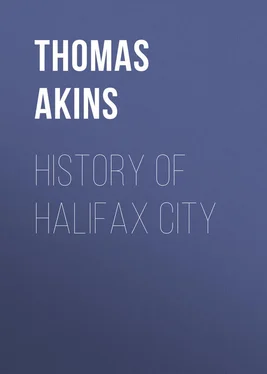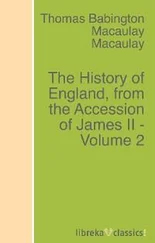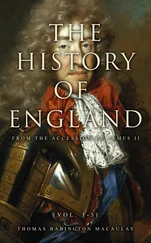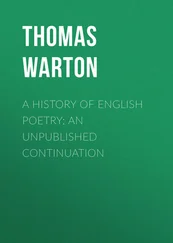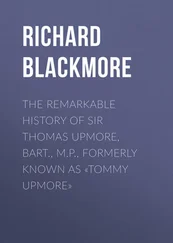Thomas Akins - History of Halifax City
Здесь есть возможность читать онлайн «Thomas Akins - History of Halifax City» — ознакомительный отрывок электронной книги совершенно бесплатно, а после прочтения отрывка купить полную версию. В некоторых случаях можно слушать аудио, скачать через торрент в формате fb2 и присутствует краткое содержание. Жанр: foreign_antique, foreign_prose, Историческая проза, на английском языке. Описание произведения, (предисловие) а так же отзывы посетителей доступны на портале библиотеки ЛибКат.
- Название:History of Halifax City
- Автор:
- Жанр:
- Год:неизвестен
- ISBN:нет данных
- Рейтинг книги:3 / 5. Голосов: 1
-
Избранное:Добавить в избранное
- Отзывы:
-
Ваша оценка:
- 60
- 1
- 2
- 3
- 4
- 5
History of Halifax City: краткое содержание, описание и аннотация
Предлагаем к чтению аннотацию, описание, краткое содержание или предисловие (зависит от того, что написал сам автор книги «History of Halifax City»). Если вы не нашли необходимую информацию о книге — напишите в комментариях, мы постараемся отыскать её.
History of Halifax City — читать онлайн ознакомительный отрывок
Ниже представлен текст книги, разбитый по страницам. Система сохранения места последней прочитанной страницы, позволяет с удобством читать онлайн бесплатно книгу «History of Halifax City», без необходимости каждый раз заново искать на чём Вы остановились. Поставьте закладку, и сможете в любой момент перейти на страницу, на которой закончили чтение.
Интервал:
Закладка:
On the 1st November, 1757, the grand jury of the County of Halifax petitioned the Governor and Council on behalf of the inhabitants of the town, that the town should be put into some state of defence "for the preservation of the place, the inhabitants, their families and effects." They stated that the property, etc., was insecure from the want of proper defences; that the people were willing to assist in the work, and intimated that if their prayer could not be heard, humbly beg that they "may immediately know it in order to take the first opportunity of convoying themselves, their families and effects, to a place of safety in some of the neighbouring Colonies." A previous petition had been presented to the Governor, to which no answer had been returned. The names attached to the petition were, Robert Saunderson, Joseph Rundell, John Anderson, Paul Pritchard, Hugh McCoy, Joseph Fairbanks, William Schwartz, Robert Campbell, William Pantree, John Killick, John Brooks, Henry Wilkinson, Walter Manning, John Slayter, Richard Catherwood, Joseph Pierce, Alexander Cunningham, Richard Tritson, Jonathan Gifford and Benjamin Leigh.
The boundaries of the Township of Halifax were settled by order in Council 20th May, 1758, as follows: That until said township can be more particularly described, the limit thereof shall be deemed to be as follows:
To comprehend all the lands lying southerly of a line extending from the westernmost head of Bedford Basin, across the northerly head of St. Margaret's Bay, with all the Islands near to said land, together with the Islands called Cornwallis Island, 35 35 Now McNab's.
Webb's and Rous' Island. 36 36 Now known as Lawlor's and Devil's Islands.
Minutes of Council 21st June, 1758: Mr. Josiah Marshall proposed to build a workhouse, 50 feet long, 20 feet wide and 8 feet high, in the town. The timber to be laid close, with a roof double boarded and shingled; to have 4 windows on each side, each window to have nine panes of glass and three iron grates; to have a staircase in the entry and a whipping post. The building to be placed on a good dry wall. Mr. Marshall's tender for £200 sterling, finding materials and labour, was accepted.
To Charles Morris, Joshua Mauger and Charles Proctor, Esquires. "Whereas, it has been thought proper to convert to the use of the public, a piece of land called Goreham's Point and the lands next ajacent, lying in the north suburbs of Halifax, formerly allotted to sundry persons, who have cleared and improved the same and erected some buildings upon them; they were directed to value the lands and proportion each owner's extent therein, and report to His Excellency. Dec. 9th, 1758."
This is the site of the Commissioners' House in the present Dockyard.
December 9th, 1758. Peter Marquis de Conte and Gravina, convicted for intent to commit rape on a child under the age of ten years, was sentenced by the Court to walk between the hours of 11 and 12 this day from the north to the south side of the Parade, and from thence to the jail with a paper placed on his breast with his crime inscribed thereon, and to be confined for three months and fined thirty pounds; to remain in jail till the same be paid. Governor Lawrence remitted the first part of this sentence. The Marquis de Conte was a Sicilian nobleman; he had been an officer in Goreham's Rangers.
December 29th, 1758. It appears by an advertisement of this date, that Governor Lawrence had wells sunk and pumps erected as reservoirs against fires, and that they had been damaged by some unknown person. His Excellency caused them to be put in repair.
Governor Lawrence, in his letter to the Board of Trade, 3rd November, 1759, mentions that the masonry of Sambro Light House had been some time finished, and that the lantern was then in progress of erection. That a chart of the harbour was also in progress, as also proper directions for piloting in ships with safety. Copies of these directions were enclosed in his letter.
It appears that in the year 1758, the Governor appropriated out of the old crown duty money for the Light House £1,000, for the Work House £500, for the Church £400, and for the Meeting House £100.

For the Work House £5,456, for the Church £350 18s. 6d., Meeting House £174 0s. 4d., Jail £208 11s. 9d.
Captain Rous was placed in charge of the Light House, a post which he occupied for many years. This was not Captain John Rous, the member of Council, but a relative of his from New England.
21st December, 1758. The Governor and Council appropriated the sum of £400, raised by duties on liquors, towards the church in Halifax, under the direction of Benjamin Green, John Collier, Charles Morris, Robert Saunderson and Henry Newton, commissioners for that purpose.
"Admiral Saunders, with the squadron under his command, arrived in good condition on the 21st April off Louisburg, but on account of ice blockading the harbour, was obliged to bear away on the 26th for Halifax, whence he arrived on the first of May."
June 16th, 1759. Peter Marquis de Conte and Gravini, was released from his imprisonment, he having paid his fine. This gentleman died at Halifax. His will is recorded in the probate office.
Thursday 16th August, 1759, William Cotteral, Robert Grant and Montague Wilmot, Esquires, Councillors, being absent from the Province, the Governor appointed Richard Bulkeley, Thomas Saul and Joseph Gerrish, who were this day sworn in and took their seats.
February, 1760, two Indian Chiefs attended the Council, and were presented with laced blankets, laced hats, etc. They were informed that the same would be sent to the Chief of the St. John's Indians, and that the treaty of peace would be ready to be signed to-morrow, and if the wind was favourable they should embark on Sunday.
In Council 11th March, 1760, the Governor appointed the Hon. Jonathan Belcher, Benjamin Green, John Collier, Charles Morris, Richard Bulkeley, Thomas Saul and Joseph Gerrish, Esquires, and William Nesbitt, John Duport, Joseph Scott, John Creighton, Sebastian Zouberbuhler, Edward Crawley, Charles Proctor and Benjamin Gerrish, Esquires, to be justices of the peace for the town and county of Halifax. Charles Morris, John Duport, Joseph Scott, Joseph Gerrish and Edward Crawley, Esquires, to be justices of the Inferior Court of Common Pleas for the county of Halifax, to the several of whom His Excellency then administered the oath requisite.
CHAPTER IV
Notwithstanding the advantages held out by Government to the settlers at Halifax, and the repeated large grants of money by Parliament, the people were rapidly removing to the old Colonies. Little progress had been made in clearing the country. The fishery, one of the main inducements of the settlement, was almost altogether neglected, and the population was reduced to much less than half its original number. They subsisted chiefly on the money expended by the Army and Navy, and were dependent on Boston for their provisions and many other necessary supplies.
In 1755, Dr. Breynton, the minister at St. Paul's, estimated the inhabitants of Halifax at 1,300, eight hundred of whom professed themselves members of the Church of England; and again in 1763, eight years later, according to the Doctor's returns to the Propagation Society, the number was still found not to exceed one thousand and three hundred souls; nine hundred and fifty of them being of the Church of England, and three hundred and fifty Protestant Dissenters and Roman Catholics.
Up to the year 1757, the enormous sum of £560,000 sterling had been expended on the settlements, and though in some respects the Colony had been considered a failure, yet in a military point of view it was of incalculable importance to Great Britain, and to its position as a naval and military depot may be ascribed in a great measure the downfall of the French power in America.
Читать дальшеИнтервал:
Закладка:
Похожие книги на «History of Halifax City»
Представляем Вашему вниманию похожие книги на «History of Halifax City» списком для выбора. Мы отобрали схожую по названию и смыслу литературу в надежде предоставить читателям больше вариантов отыскать новые, интересные, ещё непрочитанные произведения.
Обсуждение, отзывы о книге «History of Halifax City» и просто собственные мнения читателей. Оставьте ваши комментарии, напишите, что Вы думаете о произведении, его смысле или главных героях. Укажите что конкретно понравилось, а что нет, и почему Вы так считаете.
